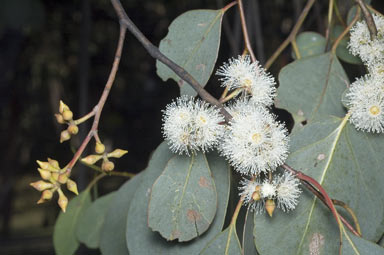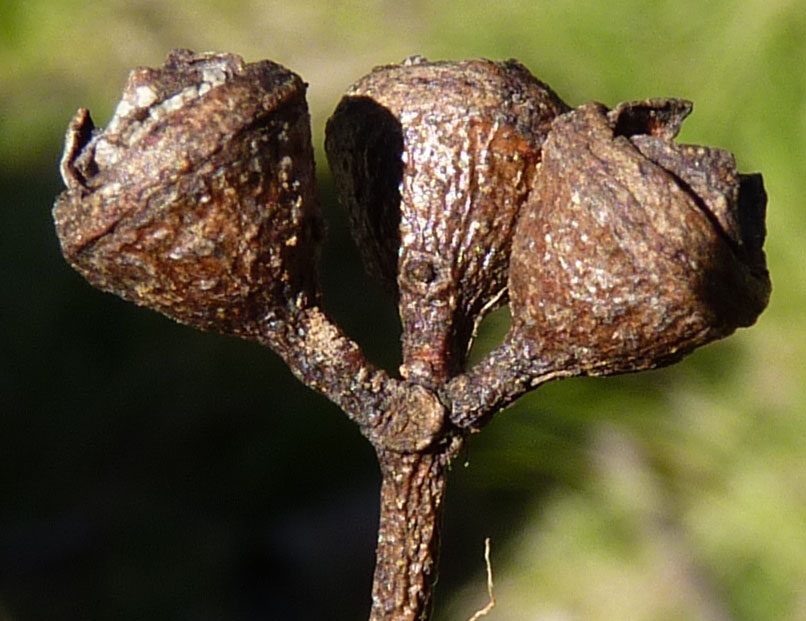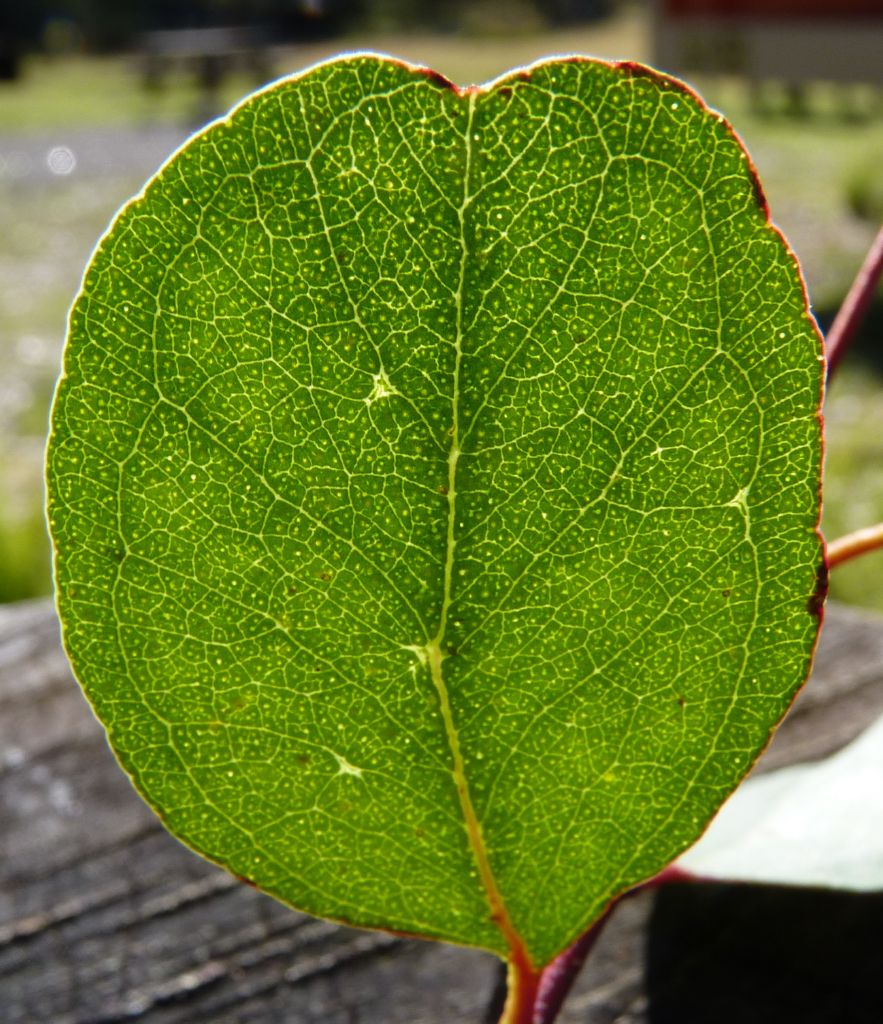Fruits/Seeds
Narrow, funnel-shaped with erect, projecting valves; 0.6 cm long and 0.6 cm diameter.
Field Guide
Improve your identification skills. Download your Mountain Swamp Gum field guide here!
Straggly to erect tree up to 20 m tall with a rounded canopy.
Smooth and grey bark on top trunk; dark grey, scaly and shedding in ribbons on lower trunk.
Juvenile leaves are thick, egg-shaped to round. Often notched on end. 7 cm long and 5 cm wide.
Adult leaves are dull green, broad, elliptic (shaped like a flattened circle) to egg-shaped 8 - 15 cm long and 2.5 - 6 cm wide with dense veins and petioles (leaf stalks) up to 3 cm.
White inflorescence (flower clusters).
Flower buds up to 7 narrow diamond-shaped buds < 0.7cm long. Commonly 7 per cluster. Similar to E. ovata but narrower.
Narrow, funnel-shaped with erect, projecting valves; 0.6 cm long and 0.6 cm diameter.
Improve your identification skills. Download your Mountain Swamp Gum field guide here!

First fully open single flower
Full flowering (record all days)
End of flowering (when 95% of the flowers have faded)
No flowering
Presence of fruits
Eucalyptus camphora is one of the most cold-adjusted eucalypt species and the sugary exudates and flowers are important food sources for Helmeted Honeyeater and lowland Leadbeater’s Possum. In a warming climate we expect plants to delay emergence until later and start flowering earlier in the year due to global heating. They may also start disappearing in areas, as warmer temperatures suppress growth and development and their ability to renegerate.


Looks similar to Broad-leaved Sally (Eucalyptus camphora subsp. camphora) and will usually have a shorter petiole at less than 20 mm long.